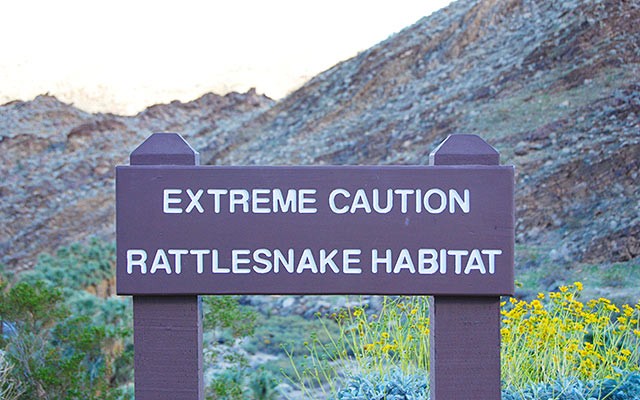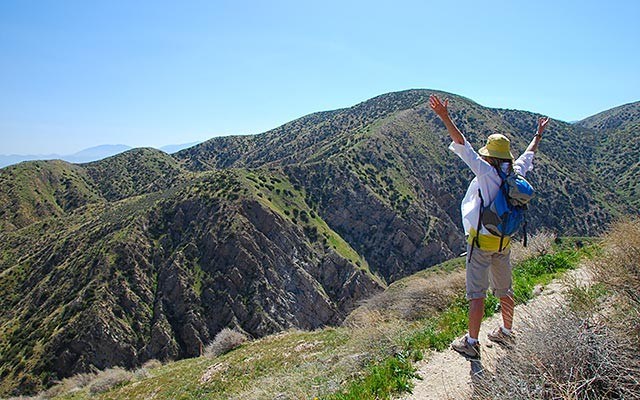"Stay by the water," warned the sunburnt woman in our back seat. It was our first afternoon in Palm Springs and we were on our way to hike the oasis-filled Lower Palm Canyon trail just 10 minutes from our hotel.
We knew the desert could be dangerous and this woman provided timely confirmation. She and her partner had left the trail by the creek bed to take a shortcut and got lost. Six hours later, exhausted and dehydrated, they finally came to the road.
Palm Springs is better known for golf and tennis, but according to Philip Ferranti, author of 140 Great Hikes in and near Palm Springs, "more than a dozen mountain ranges and foothills provide the raw material for 1,900 kilometres of hiking trails, making this area one of the premier winter hiking destinations in the United States."
Even if there are some risks we're not familiar with — rattlesnakes, flash floods, cactus thorns, and the more likely dehydration and sunburn — the hiking opportunities in the Coachella Valley are too good to pass up.
We only had five days and wanted to experience a variety of desert landscapes. A late snowfall in the San Jacinto Mountains directly above Palm Springs quashed our plans to ride the aerial tramway to the top for an easy first day's hike.
Instead we decided to stay close to the city and explore one of the so-called Indian Canyons owned by the Agua Caliente Band, the largest landowners in the city. After dropping the grateful hitchhikers at their car, we descended into a narrow canyon filled with a lush grove of towering fan palm trees (Washingtonia filifera), the only palm native to California.
This felt more like a jungle than a desert, the massive trees creating large pockets of welcome shade with their drooping "skirts" of old branches. And there was the water we were advised to stick close to — cool pools reflecting the clouds overhead.
Further from Palm Springs, beyond the citrus groves, strawberry fields and vineyards that blanket the southeastern corner of the Coachella Valley, the Mecca Hills offer a different kind of canyon experience. A few miles past the San Andreas Fault — yes, Painted Canyon Road actually crosses this infamous fault where two of the earth's plates are colliding — the dirt road peters out and a wide canyon beckons.
The odd green shrub provides some colour to what is otherwise a monochromatic lunar landscape. Soon though, the canyon walls narrow dramatically, sometimes coming so close together that we had to turn sideways to keep moving ahead. At one point, an elephant-sized boulder blocked our way. My friend crawled under it on her belly while I scrambled over the top.
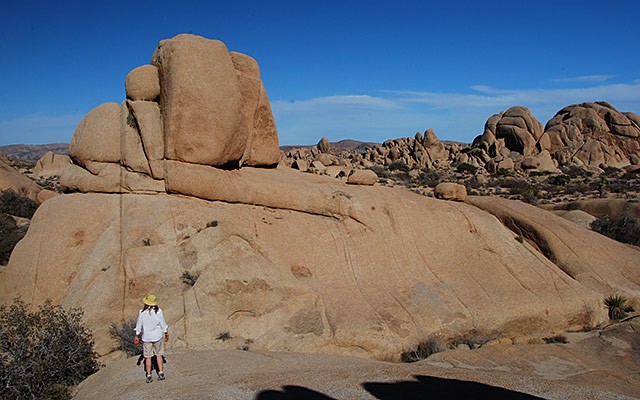
Another day we drove an hour northeast of Palm Springs to Joshua Tree National Park. It's more like what I expected of a desert, with wide-open spaces and little shade. But there were surprises here too. Who knew that tortoises and jackrabbits live in a desert? We didn't spot any, but they're here. We expected to see cactus, but not the hundreds — maybe thousands — concentrated in the cholla cactus "garden." But nothing beat the weird and wonderful granite rock formations at Jumbo Rocks. Long-ago volcanic activity, combined with more recent water and wind erosion, has produced an otherworldly landscape.
Just half an hour northwest of Palm Springs, the Whitewater River cuts a narrow channel through a wide valley. Mountains rise up on either side. "It's 2,000 miles to Canada," said a man we met on a trail that's part of the Pacific Crest Trail.
The PCT runs all the way from the Mexico/California border to the Washington/B.C. border. We weren't ready to go home just yet, but a six-kilometre hike sounded about right. A switchback trail leads to a sage-covered mountaintop. In mid-March wildflowers are ready to burst into bloom. Eleven kilometres later — we missed a turn-off! — we were back at the parking lot, happy to have gone the extra distance.
Our final day took us to a short hike within the city limits. Tahquitz Canyon is another of the Indian Canyons and feels surprisingly wild. It's less than a three-kilometre loop past bright green sycamore trees, yellow-flowering mesquite, red-blossomed chuparosa and — at the end of the canyon — a small but exquisite waterfall.
Now that we've explored five of Ferranti's suggested hikes, we're pumped to do the other 135.
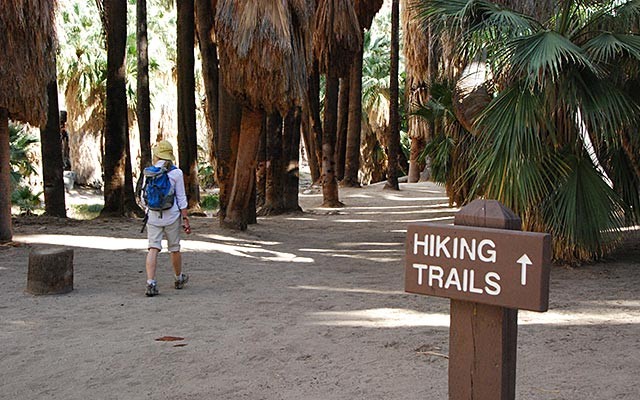
Stay: The 16-room Del Marcos Hotel is a delightful mid-century modern classic one block from downtown, with a saltwater pool and surrounded by towering palm trees.
Information: Palm Springs Visitors Centre - www.VisitPalmSprings.com
Ph: 800-347-7746
Where to eat:
Lulu California Bistro, 200 South Palm Canyon Drive, draws diners like moths to a light. Lower prices if you sit at the bar. Their Tower of Avocado and Ahi Tuna Tartar appetizer ($12.99) was memorable. http://www.lulupalmsprings.com/index.htm
Native Foods Café, 1775 E. Palm Canyon Drive, offers delicious vegan cuisine. Eat in or take out. http://www.nativefoods.com
Koffi, 515 North Palm Canyon Drive serves great coffee and muffins.
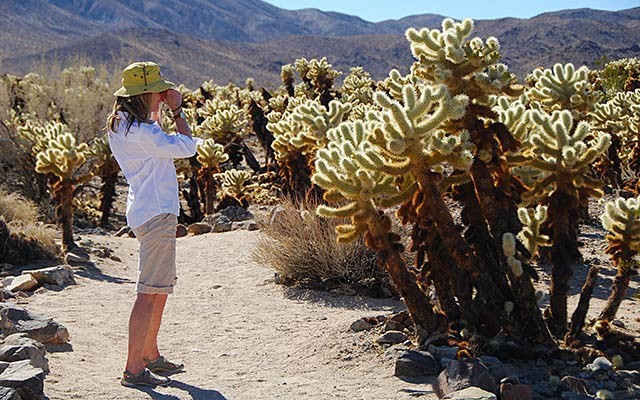
Shields Date Garden is half an hour east of Palm Springs on Highway 111 at Indio and makes delicious date shakes. Also be sure to watch their free movie on the sex life of dates! http://www.shieldsdategarden.com/default.aspx
Hiking guidebook:
140 Great Hikes in and near Palm Springs by Philip Ferranti, Westcliffe Publishers, 2011
